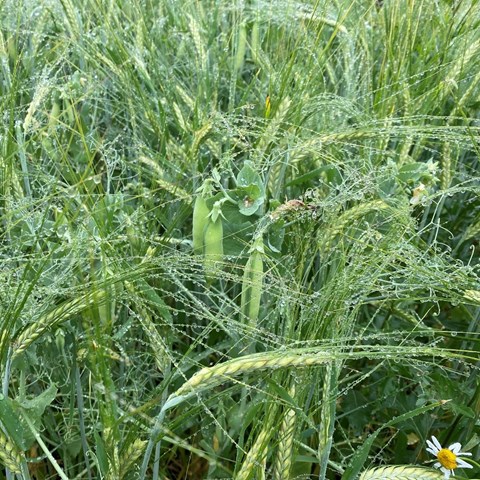The project aims to quantify the long-term benefits and identify the tradeoffs of a diversified crop rotation vis-à-vis a reference crop rotation in Scania as the benefits of crop diversification, such as build-up of soil fertility and its effects on crop performances (yield, weed suppression) and other services (reduced greenhouse gas emissions, enhanced biodiversity), can take years to manifest.
Crop diversification can offer several benefits at the cropping system level and these benefits differ according to the strategy of crop diversification (diversified crop rotation, intercropping/species mixtures, and multiple cropping/cover crops). There is lack of results on the long-term advantages and trade-offs/disadvantages of these diversification strategies, as well as potential variations in the diversification effects over time. For instance, improved competitiveness against weeds and increased yield and reduced nutrient losses can be documented in short term (immediate or within a few years), but effects on soil biology, fertility (carbon and nitrogen), yield stability and suppression/build-up of plant pathogens might take several years before significant differences appear.
This project will utilize the the field experiment (FE) established in 2018 at SITES, Lönnstorp as part of a horizon 2020 project, DiverIMPACTS. The experiment is based on two six-year crop rotations (a Reference system and a Diversified system; see details below). The Diversified system has the added diversity of intercrops and cover crops.
All crops are grown each year, in four replicate blocks with twelve plots (six crops x two rotations) randomly distributed in each block.
Reference rotation: winter oilseed rape - winter rye - oat with undersown red clover - red clover for seed - winter wheat - spring pea
Diversified rotation: winter oilseed rape intercropped with faba bean (faba beans are killed by frost during winter) - winter rye + cover crop – oat/lupin intercrop undersown with red clover - red clover for seed - winter wheat + cover crop - spring pea/barley intercrop.
Students, teachers and researcher from Sweden as well as from other countries are welcome to use the FE for study tours and research projects.
